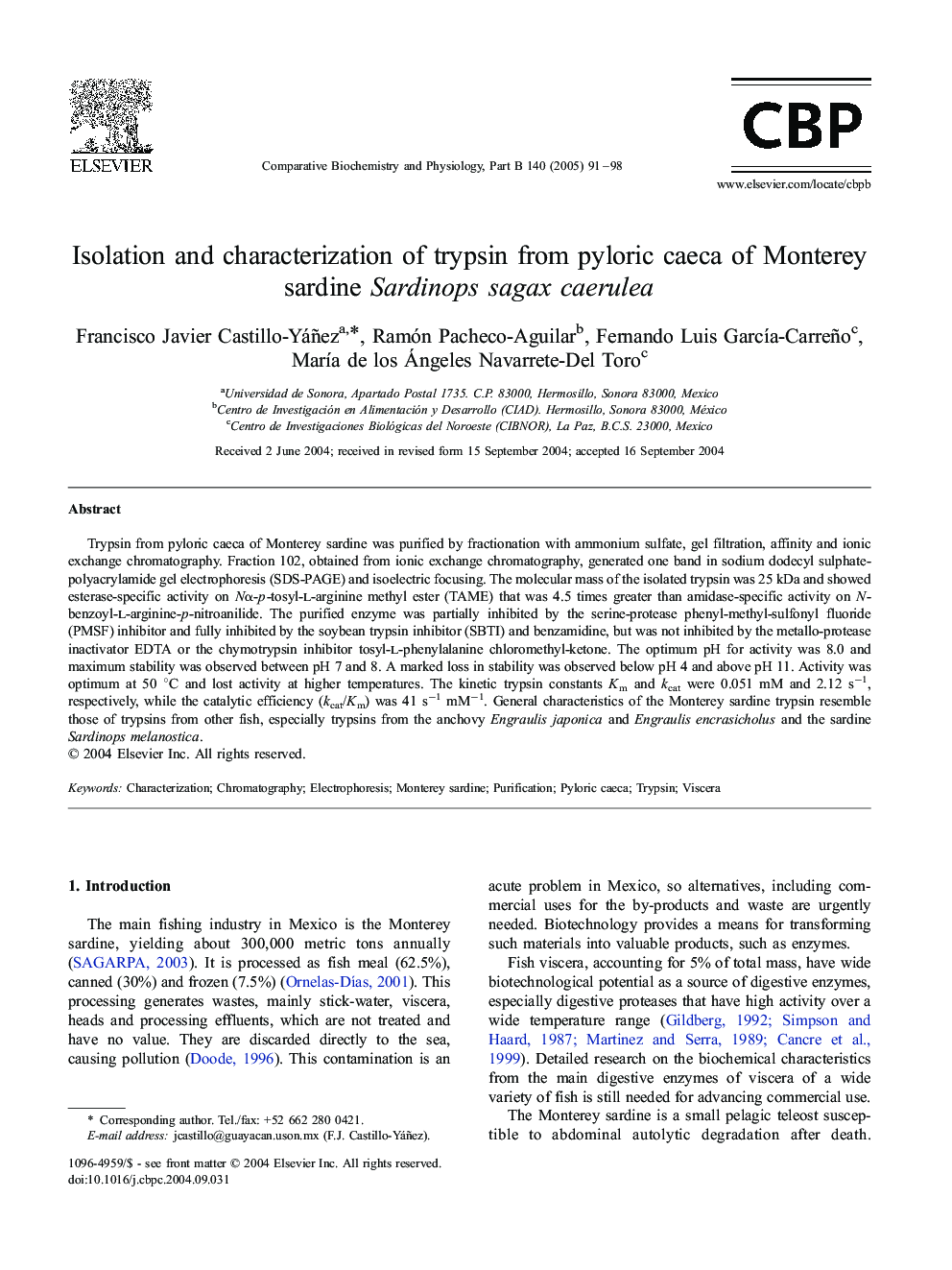| Article ID | Journal | Published Year | Pages | File Type |
|---|---|---|---|---|
| 10820813 | Comparative Biochemistry and Physiology Part B: Biochemistry and Molecular Biology | 2005 | 8 Pages |
Abstract
Trypsin from pyloric caeca of Monterey sardine was purified by fractionation with ammonium sulfate, gel filtration, affinity and ionic exchange chromatography. Fraction 102, obtained from ionic exchange chromatography, generated one band in sodium dodecyl sulphate-polyacrylamide gel electrophoresis (SDS-PAGE) and isoelectric focusing. The molecular mass of the isolated trypsin was 25 kDa and showed esterase-specific activity on Nα-p-tosyl-l-arginine methyl ester (TAME) that was 4.5 times greater than amidase-specific activity on N-benzoyl-l-arginine-p-nitroanilide. The purified enzyme was partially inhibited by the serine-protease phenyl-methyl-sulfonyl fluoride (PMSF) inhibitor and fully inhibited by the soybean trypsin inhibitor (SBTI) and benzamidine, but was not inhibited by the metallo-protease inactivator EDTA or the chymotrypsin inhibitor tosyl-l-phenylalanine chloromethyl-ketone. The optimum pH for activity was 8.0 and maximum stability was observed between pH 7 and 8. A marked loss in stability was observed below pH 4 and above pH 11. Activity was optimum at 50 °C and lost activity at higher temperatures. The kinetic trypsin constants Km and kcat were 0.051 mM and 2.12 sâ1, respectively, while the catalytic efficiency (kcat/Km) was 41 sâ1 mMâ1. General characteristics of the Monterey sardine trypsin resemble those of trypsins from other fish, especially trypsins from the anchovy Engraulis japonica and Engraulis encrasicholus and the sardine Sardinops melanostica.
Keywords
Related Topics
Life Sciences
Biochemistry, Genetics and Molecular Biology
Biochemistry
Authors
Francisco Javier Castillo-Yáñez, Ramón Pacheco-Aguilar, Fernando Luis GarcÃa-Carreño, MarÃa de los Ángeles Navarrete-Del Toro,
